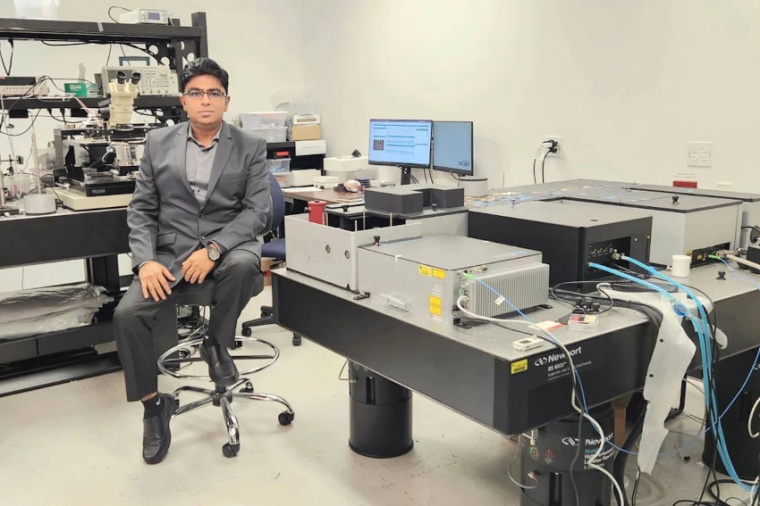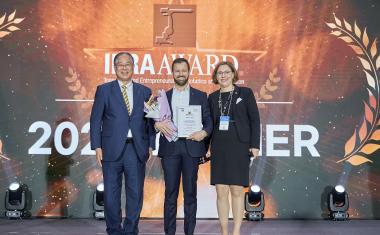New technique for photon detection
The method uses a phase-change material that changes its form when light touches it.
University of Central Florida researcher Debashis Chanda has developed a new technique to detect photons. The advancement could lead to more precise and efficient technologies in various fields, from improving medical imaging and communication systems to enhancing scientific research and even potentially bolstering security measures.

Photon detection has typically relied on change or modulation of voltage or current amplitude. But Chanda has developed a way to detect photons by modulating the frequency of an oscillating circuit, paving the path for ultra-sensitive photon detection. Chanda’s method uses a special, phase-change material (PCM) that changes its form when light touches it, making an electrical rhythm that stays steady, or a stable electrical circuit oscillation. When a light photon hits the material, it changes how fast the rhythm goes, or shifts the oscillation frequency. How much the rhythm changes depends on how strong the light is, similar to how a person’s voice changes the sound on the radio.
Long Wave Infrared (LWIR) detection in the 8 to 12 micrometer wavelength range is extremely important in astronomy, climate science, materials analysis and security. However, LWIR detection at room temperature has been a long-standing challenge due to the low energy of photons. LWIR detectors that are currently available can be broadly categorized into two types: cooled and uncooled detectors, with both having their own limitations.While cooled detectors offer excellent detectivity, they require cryogenic cooling – making them expensive and limiting their practical utility. On the other hand, uncooled detectors can operate at room temperature but suffer from low detectivity and slow response due to the higher thermal noise intrinsic to room temperature operation. A low-cost, highly sensitive, fast infrared detector/camera continues to confront scientific and technological challenges.
This is the main reason LWIR cameras are not widely used except in military and space-specific applications.“Unlike all present photon detection schemes where light power changes the amplitude of voltage or current, in the proposed scheme hits, or incidents of photons, modulate the frequency of an oscillating circuit and are detected as a frequency shift, offering inherent robustness to noises, which are amplitude modulation in nature,” Chanda says. “Our FM-based approach yields an outstanding room temperature noise equivalent power, response time and detectivity,” Chanda says. “This general FM-based photon detection concept can be implemented in any spectral range based on other phase-change materials.”
“Our results introduce this novel FM-based detector as a unique platform for creating low-cost, high-efficiency uncooled infrared detectors and imaging systems for various applications such as remote sensing, thermal imaging and medical diagnostics,” Chanda says. “We strongly believe that the performance can be further enhanced with proper industry-scale packaging.” This concept developed by the Chanda group provides a paradigm shift to high sensitive, uncooled LWIR detection as noise limits detection sensitivity. This result promises a novel uncooled LWIR detection scheme that is high sensitive, low cost, and can be easily integrated with electronic readout circuitry, without the need for complex hybridization. (Source: UCF)
Link: NanoScience Technology Center, University of Central Florida, Orlando, USA











